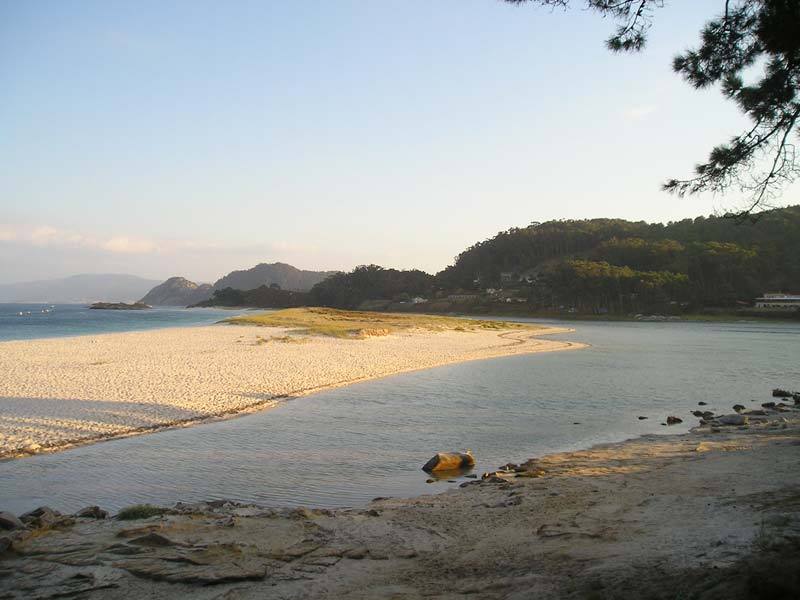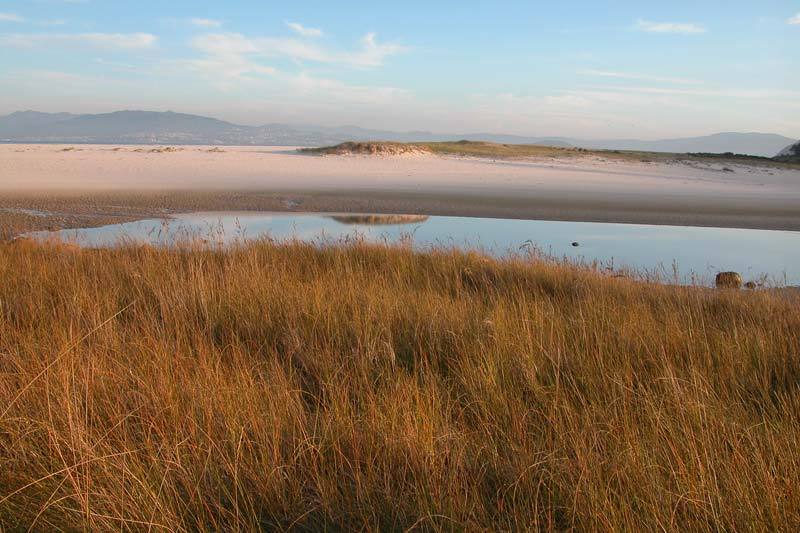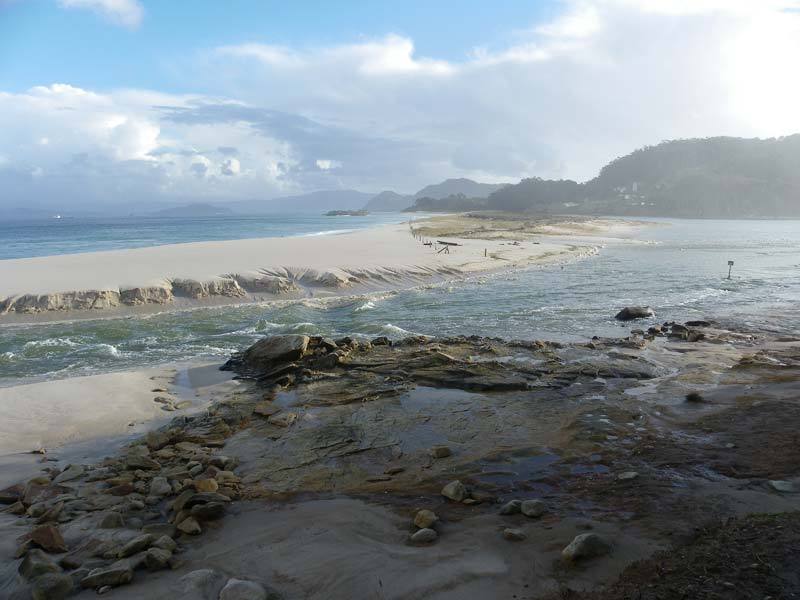Cíes acts as a natural barrier reducing the swell, building a shelter in the east and creating a unique, sedimentary environment (barrier system-lagoon) and developing dune and marine ecosystems. The water of the lagoon, renewed with the west and sometimes east tides of the islands by means of the swell breaks the sand barrier, entering the lagoon.
Different environments, intertidal and subtidal areas with a division of the system, “mouth” of the lake to the west in constant contact with the ocean, group constituted by the beach barrier and the dune system. Very important biological geomorphological group, special on the coast of Galicia, a coastal saltwater lagoon. High position over the sea level depending on the tides.
It´s a shelter for fsh and marine animals, perfect for egg-laying, making a natural hatchery feeding marine species: spider crabs, small crabs, cuttlefish, octopus, European eels, soles, conger eels, wrasses, bremas, gilt head breams, mugils and gudgeons.
The formation and evolution of this group (in the 20th century) is linked to several factors like the dick, aggregate extraction and the erosion of the dunes that lead to its silting. At the beginning of the 20th century it was built a shellfish, lobster and oyster farm.
The name of the lake dates from the seventies when children had baths here because the water was warmer and less deep and also because peope could easily catch and see fish.
Prohibited area due to the fragility and importance of the system.


